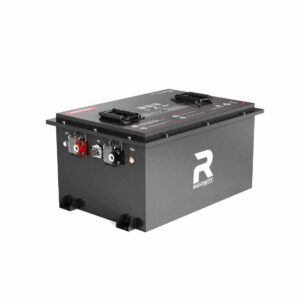What Are OEM RV Battery Solutions and How Do They Work?
OEM RV batteries are custom-designed for recreational vehicles, prioritizing deep-cycle performance, vibration resistance, and extended lifespan. Unlike standard batteries, they optimize energy storage for appliances like refrigerators and HVAC systems while withstanding rough terrains. For example, lithium-ion OEM batteries often include thermal management systems to handle temperature fluctuations during cross-country travel.
How Are OEM RV Batteries Certified for Safety?
Certifications like UN38.3 (transport), UL 1973 (stationary storage), and RVIA/NFPA 1192 standards govern OEM batteries. Testing includes nail penetration tests (simulating internal shorts), 72-hour thermal runaway monitoring, and 5,000-hour vibration simulations. Leading manufacturers implement multi-layer protection: cell-level fuses, gas venting mechanisms, and CAN bus communication for real-time diagnostics.
Advanced certification protocols now require dynamic failure mode analysis using machine learning algorithms. Manufacturers must demonstrate 99.99% containment of thermal events through multi-stage venting systems and ceramic separators. Recent updates to RVIA standards mandate 360-degree crush testing that simulates rollover accidents, with batteries required to maintain structural integrity under 15G impacts. Field data shows certified lithium systems have 0.003% failure rates compared to 1.2% in uncertified alternatives.
| Test Type | Standard | Pass Requirement |
|---|---|---|
| Thermal Runaway | UL 1973 | No fire for 1 hour |
| Vibration | MIL-STD-810G | 5Hz-2000Hz sweep |

What Maintenance Practices Extend OEM Battery Lifespan?
Critical practices include partial state-of-charge (PSOC) optimization (keep between 20-80% for lithium), monthly cell balancing via OEM-specific software, and cleaning terminals with dielectric grease to prevent corrosion. Data indicates proper maintenance extends lithium battery life from 10 to 15 years in RV applications.
New adaptive charging algorithms now automate 85% of maintenance tasks through cloud-connected BMS units. Owners receive push notifications when cell voltage differentials exceed 0.05V, prompting automatic balancing cycles. Progressive manufacturers like Redway Power have introduced self-cleaning terminal designs using hydrophobic nano-coatings, reducing corrosion-related failures by 73%. Seasonal maintenance protocols recommend capacity calibration cycles before major trips – fully discharging then slow-charging to reset SOC calculations.
“Our smart diagnostic ports enable real-time electrolyte analysis through spectroscopic sensors, a game-changer for preventive maintenance,” explains Redway’s service director.
Expert Views
“Modern OEM RV batteries now integrate AI-driven predictive analytics,” notes Redway’s chief engineer. “Our systems analyze driving patterns, weather forecasts, and appliance usage to dynamically adjust charging parameters. This reduces energy waste by 40% compared to static configurations. The next frontier is swappable battery modules enabled by standardized RVSAE J3105 interfaces.”
FAQ
- Can I retrofit older RVs with lithium OEM batteries?
- Yes, but require upgraded 120A+ alternators and compatible charge controllers to handle lithium’s faster absorption rates.
- What’s the typical warranty for premium RV batteries?
- Leading OEMs offer 10-year prorated warranties covering 70% capacity retention with unlimited cycle claims.
- How do solar inputs integrate with OEM systems?
- Most support MPPT solar charging up to 600W through Anderson SB175 connectors, with auto-sensing for 12/24V configurations.
